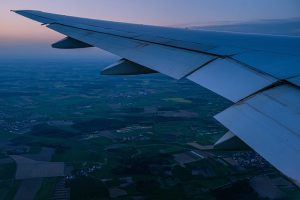
Flight control surfaces play an important role in aviation. As their name suggests, they are surfaces that pilots can control to adjust an airplane’s altitude or trajectory.
There are main flight control surfaces, such as ailerons, elevators and rudders, and there are secondary flight control surfaces, such as spoilers, slats and flaps. Rather than separate ailerons and flaps, however, some airplanes feature flaperons. What are flaperons exactly?
Overview of Flaperons
Flaperons are flight control surfaces that function as both flaps and ailerons. They are found on the wings — typically around the midsection or end.
Like with all flight control surfaces, flaperons are used to adjust an airplane’s altitude or trajectory. Pilots can leave them extended so that they remain flush with the rest of the wings. Alternatively, pilots can lower them to achieve a specific angle of deflection.
Ailerons vs Flaps
To better understand the purpose of flaperons, you must familiarize yourself with the basic functions of ailerons and flaps. Ailerons are designed to roll airplanes to the left or right. They consist of hinge-like surfaces on the left and right wings that tilt in opposite directions. When a pilot moves the yoke, one of the ailerons will tilt up and the other will tilt down.
Flaps, on the other hand, are used to increase lift. During takeoffs and landings, for instance, pilots may extend the airplane’s flaps downward. This additional boost of lift helps the airplane get airborne and land safely at slower speeds.
Why Airplanes Have Flaperons
Some airplanes have separate ailerons and flaps, whereas others have flaperons. Combining these two otherwise common flight control surfaces into a single surface offers several benefits.
Airplanes with flaperons often weigh less than those with separate ailerons and flaps. All flight control surfaces add weight to airplanes. The more flight control surfaces an airplane has, the more it will weigh. Flaperons, though, combine the effects of ailerons and flaps into a single type of control surface, resulting in less added weight.
Flaperons allow for a simpler wing design. Airplanes with flaperons have simpler wings that are easier to maintain than those with separate ailerons and flaps.
Flaperons can even improve fuel efficiency. They reduce drag and optimize wing performance, which translates into better fuel efficiency. And with better fuel efficiency, airplanes with flaperons cost less to operate. These are just a few reasons airplanes have flaperons.



